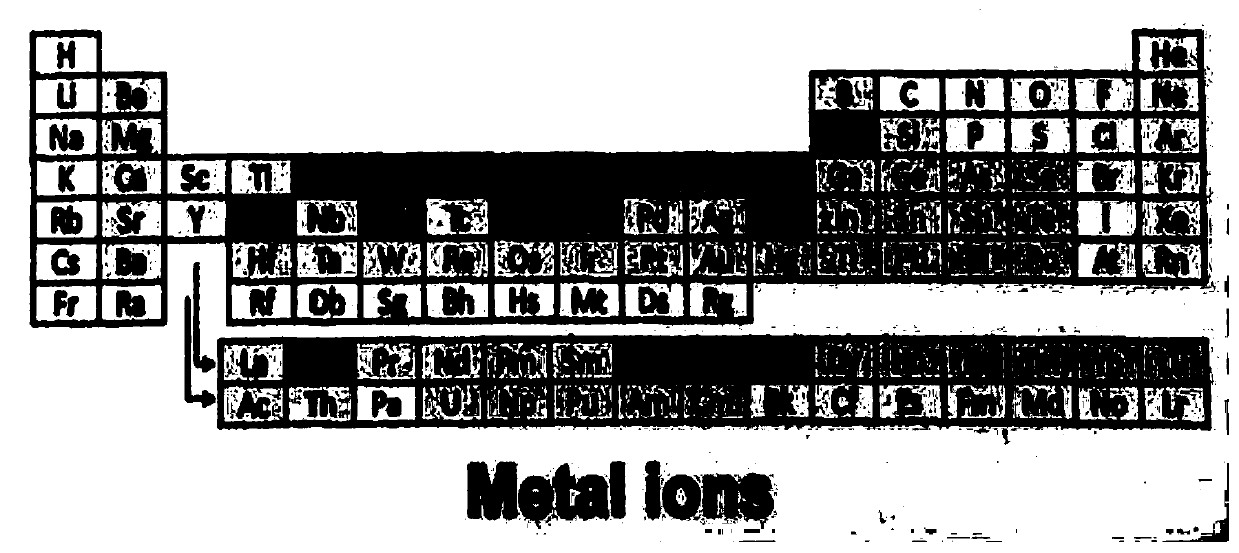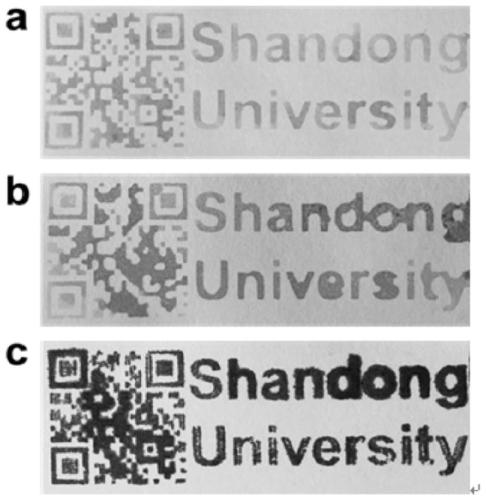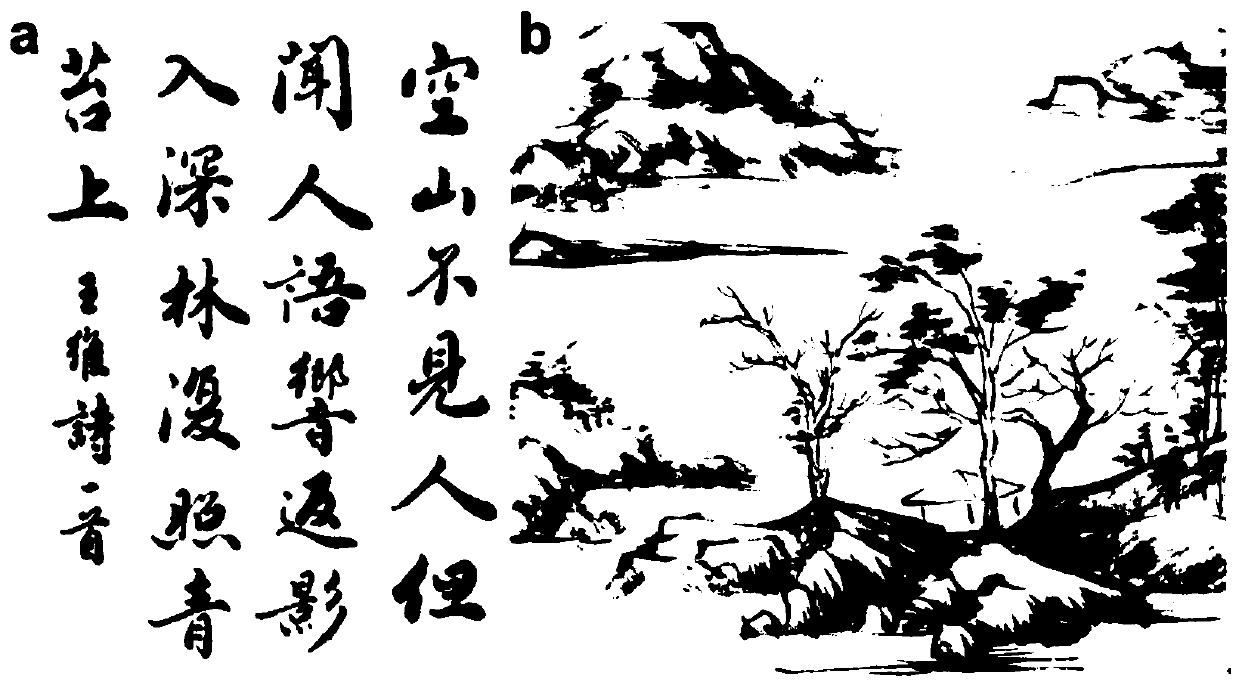Recyclable color development method based on metal-polyphenol network structure
A network structure, metal technology, applied in the fields of printing, writing, and printing, can solve the problems of color density and sharpness limitation, high cost, precipitation, etc., to achieve high color sharpness and density, easy operation, and high stability. Effect
- Summary
- Abstract
- Description
- Claims
- Application Information
AI Technical Summary
Problems solved by technology
Method used
Image
Examples
Embodiment 1
[0044] Example 1 Recyclable black and white inkjet printing
[0045] (1) Dissolve 1g of tannic acid in 10mL of ethanol, polyphenol solution, put the polyphenol solution in a watering can and spray it onto the surface of A4 printing paper, and let it dry naturally at room temperature;
[0046] (2) 2g ferric chloride hexahydrate is dissolved in the ethanol of 10mL, obtains color developing ink, and the color developing ink is injected in the empty ink cartridge (HP803) of common ink jet printer (HP Desk Jet 1112) with syringe;
[0047] (3) Connect the computer and the printer normally, install the color ink cartridge into the printer, put the dried printing paper treated with the polyphenol solution into the printer's paper storage box, select the document to be printed, and print in black and white.
[0048] The printing effect of embodiment 1 is as follows figure 1 shown.
Embodiment 2
[0049] Example 2 Recyclable color stamps
[0050] (1) 1g of tannic acid was dissolved in 10mL of ethanol, polyphenol solution, the polyphenol solution was installed in a watering can and sprayed onto the surface of the self-adhesive paper, and air-dried at room temperature;
[0051] (2) Add 8 mL of water to bis(2-hydroxypropionic acid) diammonium dihydroxide titanium complex solution (50wt.% aqueous solution, 2 mL); dissolve 1 g of copper sulfate pentahydrate and 1 g of ferric trichloride hexahydrate into In 10 mL of water, color inks of yellow, brown and black stamps were obtained.
[0052] (3) Use a brush to apply different color developing inks to the surface of the dry stamp respectively, and then print clear icons of corresponding colors on the above-mentioned adhesive paper treated with tannin acid. stamp effect figure 2 shown.
Embodiment 3
[0053] Embodiment 3 can recycle soft pen calligraphy and painting
[0054] (1) 1g of tannic acid was dissolved in 10mL of ethanol, polyphenol solution, the polyphenol solution was installed in a watering can and sprayed onto the surface of the rice paper, and it was ventilated and dried at room temperature;
[0055] (2) 1.5g ferric chloride hexahydrate, 1.5g copper sulfate pentahydrate (dissolved in 10mL water / ethanol mixed solution with 10% ethanol volume fraction respectively; bis(2-hydroxypropionic acid) dihydrogen 7mL of water was added to the diammonium oxide titanium solution (50wt.% aqueous solution, 3mL) to obtain black, brown and yellow color inks respectively;
[0056] (3) Dip black ink with a writing brush, and create calligraphy and ink painting on the rice paper treated in step (1) (effects such as image 3 shown), when you need to add other colors to the painting, replace the brush or wash the brush and dip it in brown and yellow ink for use.
PUM
 Login to View More
Login to View More Abstract
Description
Claims
Application Information
 Login to View More
Login to View More - R&D
- Intellectual Property
- Life Sciences
- Materials
- Tech Scout
- Unparalleled Data Quality
- Higher Quality Content
- 60% Fewer Hallucinations
Browse by: Latest US Patents, China's latest patents, Technical Efficacy Thesaurus, Application Domain, Technology Topic, Popular Technical Reports.
© 2025 PatSnap. All rights reserved.Legal|Privacy policy|Modern Slavery Act Transparency Statement|Sitemap|About US| Contact US: help@patsnap.com



